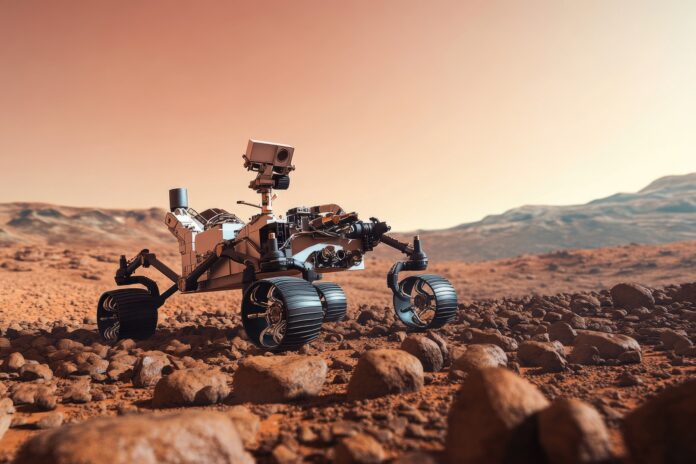The concept of space exploration has captivated humanity for centuries, from early astronomical observations to the modern era of crewed space missions. However, as we push the boundaries of our knowledge and capabilities, space robotics emerges as a critical field, enabling us to explore regions of space that are too distant, hostile, or challenging for human astronauts. Space robotics is not only transforming our approach to exploration but is also laying the groundwork for a thriving space industry.
The Role of Robotics in Space Exploration
Space robotics encompasses the development and deployment of autonomous or semi-autonomous robotic systems designed to operate in the unique environment of space. These robots perform a wide range of tasks, from assembling structures in orbit to exploring distant planets and moons. The inherent challenges of space—such as extreme temperatures, radiation, and microgravity—require robots to be highly resilient, adaptive, and capable of functioning without direct human intervention.
Mars Rovers: The Pioneers of Planetary Exploration
One of the most well-known examples of space robotics is the series of rovers sent to Mars. The Curiosity rover, which landed on Mars in 2012, and the Perseverance rover, which followed in 2021, represent significant advancements in space robotics. These rovers are equipped with sophisticated instruments to analyze the Martian surface, search for signs of past life, and collect data to prepare for future human missions. Perseverance, for instance, carries the Ingenuity helicopter, a technological marvel that marks the first powered flight on another planet.
Mars rovers exemplify the growing complexity and capability of space robots. They are designed to operate autonomously, making decisions about navigation and scientific observations based on their environment. This autonomy is crucial, given the communication delay between Earth and Mars, which can range from 4 to 24 minutes depending on their relative positions.
Autonomous Robotics: The Future of Deep Space Exploration
As humanity sets its sights on more distant targets like the Moon, asteroids, and eventually, deep space destinations such as the moons of Jupiter and Saturn, the role of autonomous robotics becomes even more essential. These missions involve environments that are far more challenging than Mars, requiring robots to be entirely self-sufficient.
Lunar Exploration and the Artemis Program
NASA’s Artemis program, which aims to return humans to the Moon by the mid-2020s, will rely heavily on space robotics. Autonomous landers, rovers, and construction robots will play key roles in establishing a sustainable human presence on the Moon. The Volatiles Investigating Polar Exploration Rover (VIPER) is an example of a robotic mission designed to prospect for water ice at the Moon’s south pole, a resource critical for future lunar habitats.
Additionally, the development of robotic systems for the assembly and maintenance of lunar bases will be crucial. These robots will need to handle tasks such as constructing habitats, deploying solar panels, and managing resources—tasks that would be dangerous or impossible for astronauts in the harsh lunar environment.

Robotics in Space Industry and Infrastructure
Beyond exploration, space robotics is poised to revolutionize the space industry. The commercialization of space has accelerated in recent years, with companies like SpaceX, Blue Origin, and others leading the charge. Robots will play a pivotal role in this new space economy, particularly in areas such as satellite servicing, space debris removal, and the construction of space infrastructure.
Satellite Servicing and Debris Removal
As the number of satellites in orbit continues to grow, so does the problem of space debris. Space robotics offers a solution to this issue through autonomous servicing missions. Robots like NASA’s Restore-L are being developed to refuel and repair aging satellites, extending their operational life and reducing the need for costly replacements. Similarly, robotic systems are being designed to capture and deorbit space debris, helping to maintain the safety and sustainability of Earth’s orbital environment.
Space Manufacturing and Assembly
The future of space infrastructure will likely involve the in-orbit assembly of large structures, such as space stations, telescopes, and habitats. Space robotics will be essential for these tasks, as they can perform precise construction operations in microgravity. The European Space Agency’s EROSS (European Robotic Orbital Support Services) project is an example of efforts to develop robotic systems capable of assembling and maintaining space structures. These technologies will enable the creation of megastructures that are too large to launch in one piece from Earth.
Challenges and Innovations in Space Robotics
While the potential of space robotics is immense, the field faces significant challenges. Designing robots that can operate reliably in space requires overcoming technical hurdles related to power supply, communication, autonomy, and resilience. For instance, the extreme radiation in deep space can damage electronic components, necessitating the development of radiation-hardened systems.
Moreover, robots operating in space must be able to adapt to unexpected situations. Unlike on Earth, where human operators can quickly intervene, space robots often need to make critical decisions independently. Advances in artificial intelligence and machine learning are helping to address these challenges by enabling robots to process vast amounts of data and learn from their experiences.
AI and Machine Learning in Space Robotics
Artificial intelligence (AI) and machine learning (ML) are becoming integral to the development of space robotics. These technologies allow robots to analyze their environment, identify anomalies, and make decisions without human intervention. For instance, NASA’s Mars 2020 mission utilized AI to help Perseverance navigate the Martian surface more effectively, avoiding hazards and optimizing its path for scientific discovery.
The integration of AI and ML into space robotics is also crucial for deep space missions, where communication delays can make real-time control impossible. Autonomous robots equipped with AI can perform complex tasks such as navigating unknown terrains, conducting scientific experiments, and even making repairs—all without direct human input.

The Future of Space Robotics
The future of space robotics is intertwined with the future of space exploration and industry. As we look to the next few decades, we can expect to see even more advanced robotic systems that are capable of exploring the outer planets, building and maintaining space habitats, and supporting human missions beyond Earth.
Human-Robot Collaboration in Space
One of the most exciting prospects for space robotics is the potential for human-robot collaboration. Rather than replacing astronauts, robots will serve as their partners, handling dangerous or repetitive tasks and allowing humans to focus on more complex and creative endeavors. This collaboration will be essential for the success of future missions to the Moon, Mars, and beyond.
For instance, NASA’s Robonaut project aims to develop humanoid robots that can work alongside astronauts on the International Space Station (ISS). These robots could eventually perform maintenance tasks, assist with scientific experiments, and even help with the construction of space infrastructure.
Conclusion
Space robotics is rapidly becoming a cornerstone of modern space exploration and industry. From Mars rovers and lunar explorers to satellite servicing robots and space construction systems, the applications of robotics in space are vast and varied. As technology continues to advance, space robotics will undoubtedly play an increasingly critical role in humanity’s journey to the stars, enabling us to explore new frontiers and build a sustainable presence beyond Earth.



